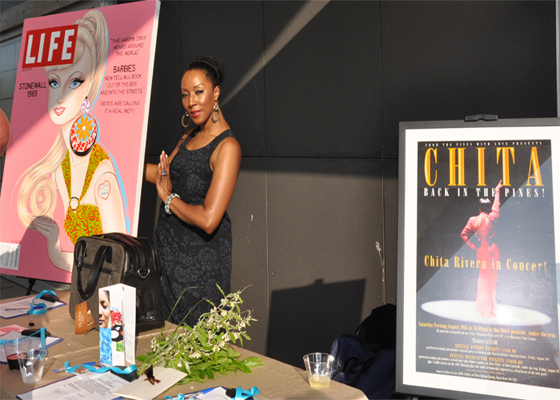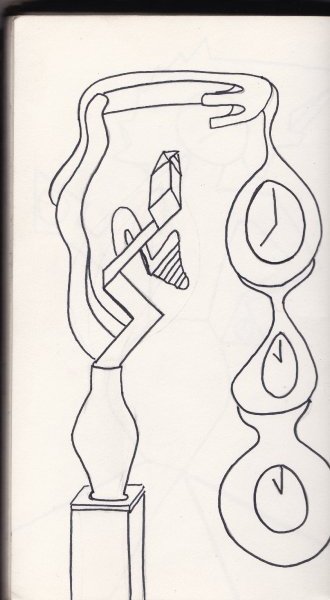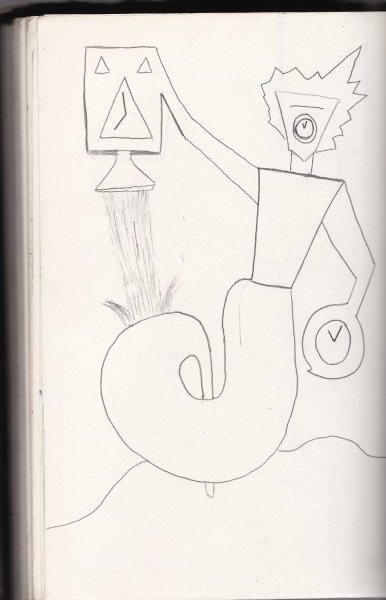Got a tattoo or planning on getting one? Then ADRLF’s Liver Cancer Awareness Month and World Hepatitis Day 2017 campaign is for you! Over 45 million Americans have at least one tattoo, including over 60% of millennials. But what gets lost in the hype of finding the coolest design and the best artist is the important conversation about hepatitis C, and the risks of body art. This year, we’re once again aligning with the World Health Organization and the World Hepatitis Alliance in the global effort to eliminate hepatitis, as we shine a spotlight on the increasingly popular ‘ink movement’, by promoting safe tattoo practices, in the name of hepatitis awareness and prevention.
The Hepatitis and Tattoo Connection
Hepatitis C affects over 3 million people in the U.S. One way the hepatitis C virus is spread is through unsterile needles used in tattoo and body piercing procedures. A 2013 study found that people with hepatitis C were almost four times more likely to report having a tattoo, while more recent studies recognize tattooing as a significant risk factor of hepatitis C (Adv Biomed Res. 2017; Curr Probl Dermatol. 2015). Also in 2013, the largest tattoo-related outbreak was reported in Rochester, NY. Nineteen people developed bubbly rashes on their new tattoos, which were done using dirty needles in an unsanitary setting.
Tattoo inks are also believed to have some serious health risks. Many of today’s tattoo inks contain metallic salts, oxides, sulphides, selenides, and other potentially carcinogenic chemicals that you simply would not want to be embedded on your body, and can take years to manifest into related illness. (Tattoo Health.org).
Furthermore, there’s no sure-fire way to tell if the ink is safe from infection. In fact, it can be contaminated even if the container is sealed or the label says the product is sterile (FDA, 2015). Ironically, the word “tattoo” literally means “stigma” in Latin.
While your priority might be to find the best ink master in town, your first priority should be finding the most hygienically conscientious one. For example, did you know that tattooists and piercers are required to attend blood-borne pathogen training to ensure safe practices and prevent transmission of infections like hepatitis? Did yours train? These and many other facts should be your armor, as you consider the pros, cons, and safest practices of tattooing. So, while ADRLF fully encourages freedom of expression and artistry, before you consider getting tatted-up — please CHECK OUT these Top 10 Facts for Hepatitis-Aware Tattoo Safety!
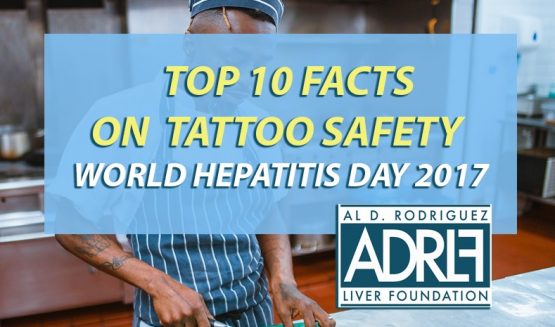
Fact #1: Although contracting hepatitis C during the tattooing process is a very real risk, this potential health hazard has not decreased the country’s rising ink love affair. Americans spend approximately $1.65 billion on tattoos annually. And with over 23,000 tattoo parlors in the U.S. alone, a new establishment is being added in the country every day. Interestingly, more women have tattoos than men in the U.S. (23% vs. 19%).
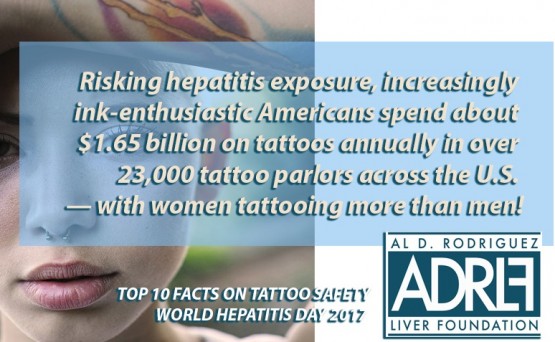
Fact #2: Tattoo machines can puncture the skin up to 3,000 times per minute, opening up possibilities of infectious diseases like hepatitis, tetanus, and AIDS. A standard 1-hour session equals 180,000 tiny, open “Russian Roulette” wounds, providing a pathway to life-threatening infections. (Action Wellness, 2015).
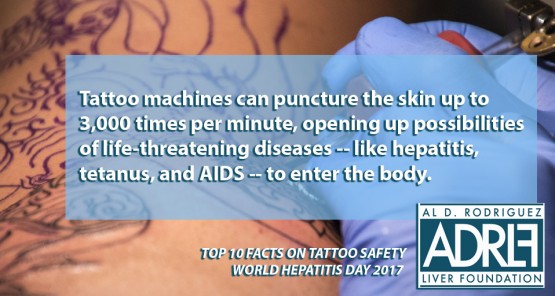
Fact #3: Tattoo parlors are not held to the same sterility standards as doctors’ offices and hospitals. In the U.S., only a few states have strict hygienic regulations, and even fewer monitor and enforce standards. To reduce cross-contamination, tattooists and piercers must take basic preventative measures like handwashing and using new gloves for each new client (CDC, 2013).
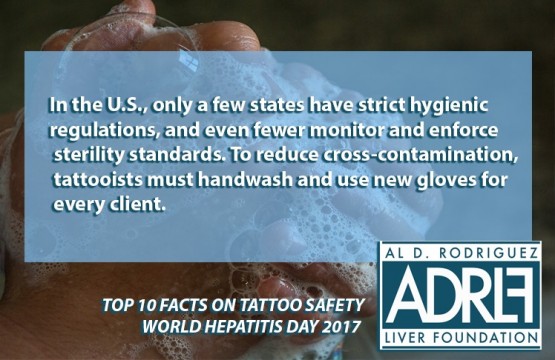
Fact #4: Blood does not have to be visible on the tattoo needle to transmit infection. All reusable tools, counter spaces, and client chairs must be disinfected and sterilized after each use. Single-use supplies must be discarded (CDC, 2013).
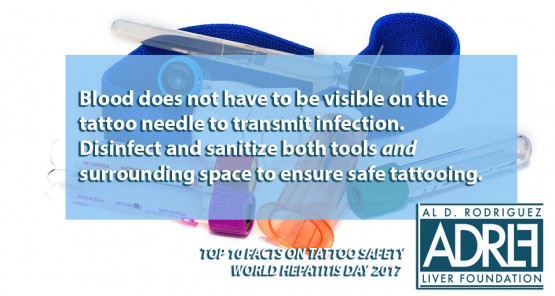
Fact #5: Celebrities are speaking out about hepatitis risks, including actress Pamela Anderson, who disclosed she unknowingly contracted hep C from sharing a tattoo needle with her tatted-up rockstar ex-husband, Tommy Lee (webmd.com). Rock n’ blues pioneer Gregg Allman, who passed away last May 2017 from liver cancer, also shared in this video how he may have gotten hepatitis from a tattoo procedure.
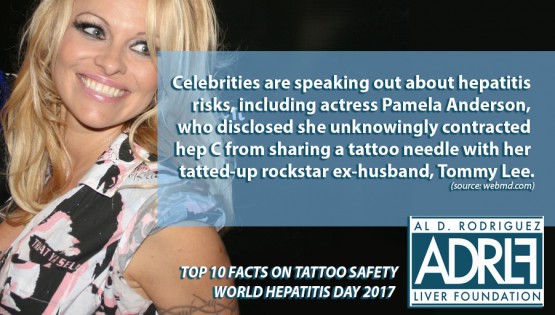
Fact #6: As opposed to tattooing of the past, today’s techniques, tools and chemicals have changed significantly. In fact, many tattoo inks contain body-hazardous ingredients originally intended for writing, car paint, and printer ink. And while considered trade secrets, these inks may contain chemicals known to cause birth defects, mutations, and even cancer, ultram with symptoms that may take years to appear (Tattoo Health.org).
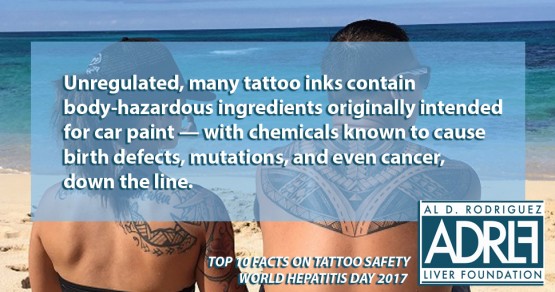
Fact #7: There’s a greater chance of contracting hep C from informal settings with poor infection control, like pop-up parlors, prisons, and “tattoo parties,” where unregulated tattooing and piercing are known to occur with contaminated needles. (CDC, 2016).
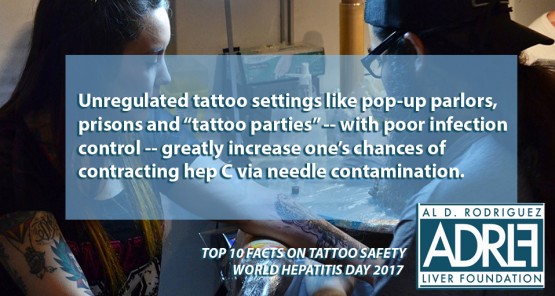
Fact #8: ‘Ink-appreciators’ seeking an alternative to tattooing should consider henna body art, which involves applying the processed henna plant leaves’ paste onto the skin. Elaborate staining patterns can create temporary tattoos where desired (2014 case report).
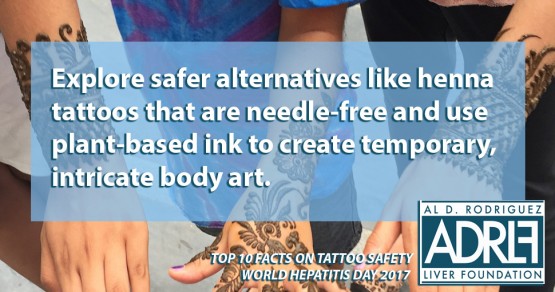
Fact #9: Although invisible to the naked eye, increasingly popular ultraviolet tattoos — ones that become visible under a black light (at nightclubs, raves, etc.) — can nonetheless pose “significant safety issues”, due to their unregulated chemical ingredients; most dangerously so, phosphorous — which can cause a number of skin problems, including infections, blisters, and have links to cancers. Contaminated needles can also carry hepatitis C (2014 case report; tatring.com).
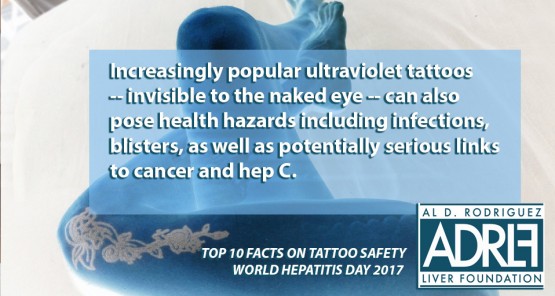
Fact #10: If you’re planning on getting a tattoo, find a reputable and licensed tattoo artist with a clean studio. Ask for new tools and unused pigments; and watch the artist remove sterilized needles from their packets (Healthline.com). Get tested for hepatitis C if you have a tattoo and any other risk factors such as medical issues like blood clots and STDs, and exposure to injected drugs and blood transfusion (CDC, 2015). Remember to Screen. Vaccinate. Don’t hesitate!
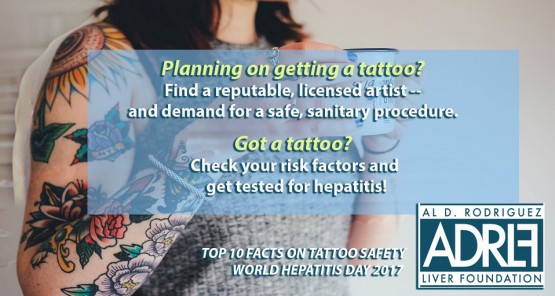









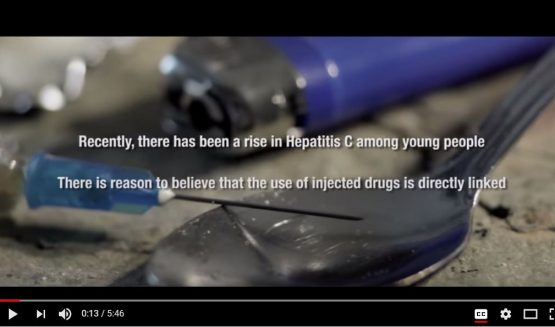

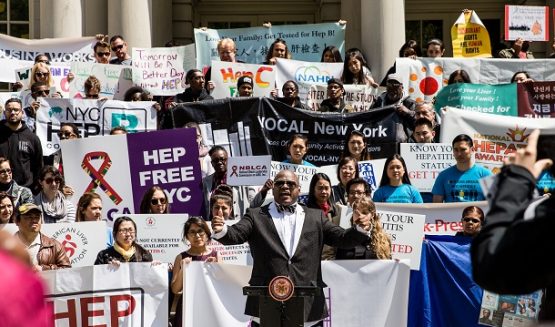
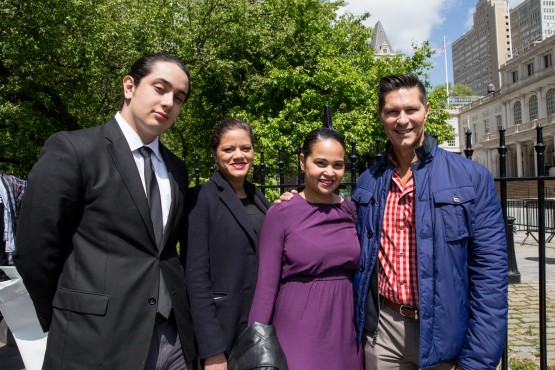
 The World Health Organization (WHO) confronts this question with an official response: the first ever publication outlining global guidelines for viral hepatitis released in February 2017 at the 26th Conference of the Asian Pacific Association for the Study of the Liver in Shanghai, China.
The World Health Organization (WHO) confronts this question with an official response: the first ever publication outlining global guidelines for viral hepatitis released in February 2017 at the 26th Conference of the Asian Pacific Association for the Study of the Liver in Shanghai, China.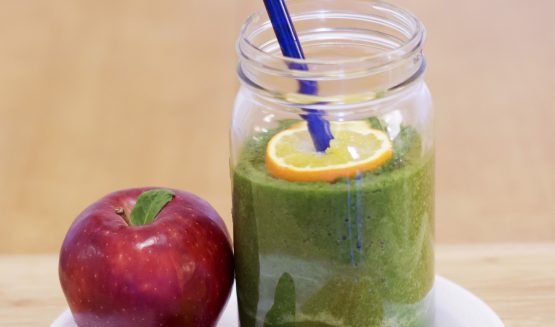 Ultimate Green Smoothie (source: www.incrediblesmoothies.com)
Ultimate Green Smoothie (source: www.incrediblesmoothies.com)













